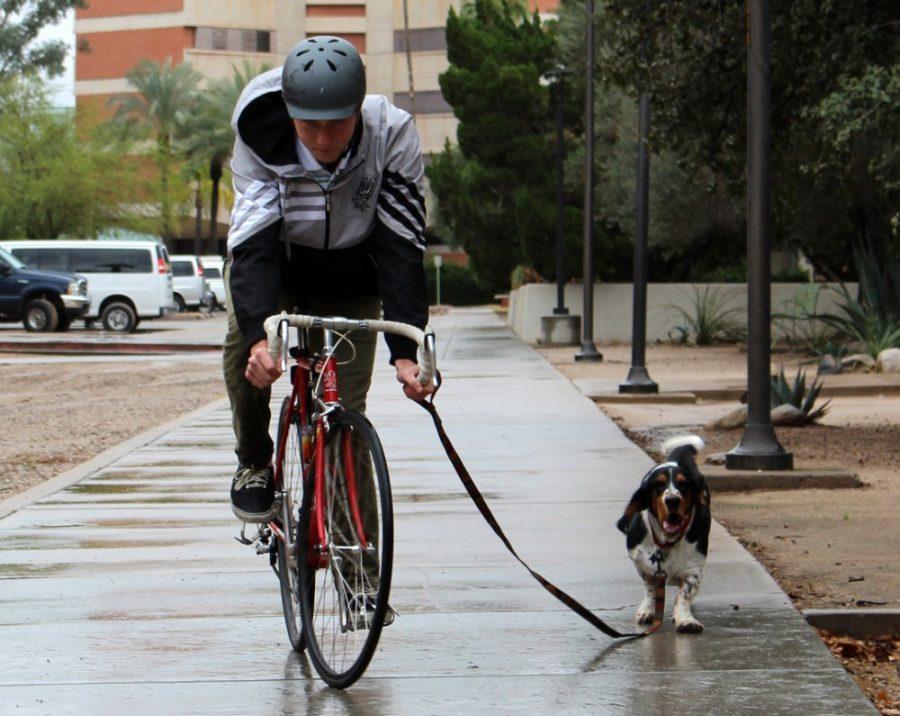Biking is a common method for both recreation and transportation in the U.S., Tucson in particular, and helmets are the standard for protecting bikers’ heads from injury. However, research done by trauma surgeons at the UA shows that helmets might not have the protective power they are believed to confer to bikers.
Dr. Bellal Joseph, a trauma surgeon at the University of Arizona Medical Center and an associate professor of surgery, recently published a paper analyzing the level of protection a bicycle helmet offers its wearer in the event of an accident.
“We showed that [the helmet] does protect you against the scrapes, scratches or bruises from a fall, but they make no significant difference for bleeds inside your head,” Joseph said.
The study, published in the European Journal of Trauma and Emergency Surgery, analyzed 709 patients over a four-year span between 2009 and 2012. The study included 300 patients who were wearing a helmet at the time of injury and 409 who were not.
While the results may be surprising to some, Joseph said he believes this is a result of ineffective helmet design.
“Just to be clear, we think helmets make a difference,” Joseph said.
However, Joseph said it won’t make a big difference when it comes to internal bleeding.
“It’s a good finding that we know for a fact that these helmets can protect against these minor injuries and scratches to the head,” said Dr. Bardiya Zangbar, an international research fellow in the Division of Trauma, Critical Care, Burn and Emergency Surgery at UAMC. “It’s better to see if there is a way to prevent something, to protect against intracranial hemorrhage, which seriously affect patients’ outcomes.”
One of the goals of the trauma team at the UA is to promote its research to educate the public and effect change.
“People in the U.S. are more aware of the threat that come out of these injuries, and one of the reason is the community — the trauma community, the medical community — they focus on these issues and publish literature that tells people about these injuries,” said Dr. Mazhar Khalil, also an international research fellow in the Division of Trauma, Critical Care, Burn and Emergency Surgery at the UAMC.
With this study out in the public view, Joseph said he believes it should help different parts of the university and community and people who construct and develop helmets.
“When they see the clinical outcome or the impact of their devices by publishing something like this, that’s what we hope — that this noise leads to the development of better helmets and better research,” Joseph said.
The study has generated a lot of noise, Joseph said, and ultimately, he said he hopes to have this be a catalyst for change in helmet design, leading to improved safety and outcomes.
“We’re not saying that helmets are bad,” Joseph said, “but they’re not made to protect you against the scratches and bruises. The helmet is truly there to protect you against this [intracranial] bleeding, and if that is not being seen, then we need to question not whether or not we should wear helmets, but rather how our current helmets are developed.”
_______________
Follow Laeth George on Twitter.









